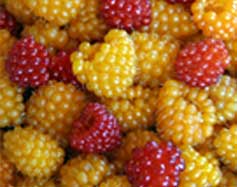Tribes: Alaska
Yupik: Changes & Observations
Snow:
 Residents of Quinhagak have observed much lower levels of snowpack in the past five years. Snowdrifts used to
be as high as houses, but now winter snows may barely cover the tussocks and the tundra. With little or no
snow, potholes can form which may impact travel and hunting as well as land mammal behaviors.
Residents of Quinhagak have observed much lower levels of snowpack in the past five years. Snowdrifts used to
be as high as houses, but now winter snows may barely cover the tussocks and the tundra. With little or no
snow, potholes can form which may impact travel and hunting as well as land mammal behaviors.
Snowfall affects winter bear, ungulate, and human behaviors. Brown bears are beginning to build their dens
on the tundra flats instead of on the south facing mountains, and are coming out of winter hibernation
earlier, in December and January when unusual winter rains are occurring. This is having an effect on
predation in the area that has not yet been fully realized. Although the reduced amount of snow negatively
affects some animal species, it may actually help ungulates. Less snow makes more food (lichen and willow
shoots) available to caribou and moose. This may benefit humans who depend on these animals as a food source.
The reduced amount of snow is also impacting berry production as residents are noticing a decline in the
amount of harvestable berries, and this affects those dependent on berries as a food source, including
land animals and humans. Salmonberries, an important food for some Alaska Natives, seem to be declining
due to inadequate amounts of moisture provided by the diminished snow fall.
Adaptation:
The high price of fuel in rural Alaska is requiring residents to modify their behaviors and decrease their
fossil fuel use. This is better not only for their personal finances, but also for the environment.
Coping strategies include
